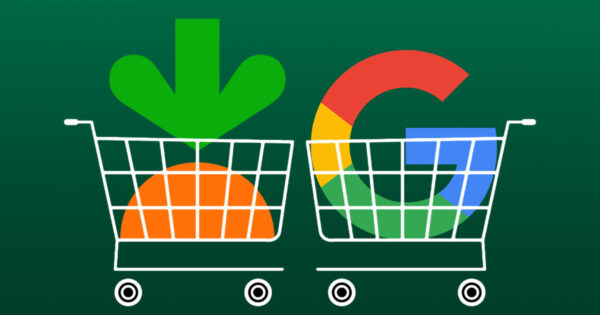
[ad_1]
Instacart is letting advertisers use its vast trove of shopper data to target ads on Google Shopping campaigns, the grocery delivery firm announced at technology conference CES today.
The Google partnership continues its strategy to let brands target Instacart ads off-platform, said CEO Fidji Simo. Last year, the company announced partnerships with Roku and The Trade Desk.
“Instead of you placing an ad on Google and not really being able to know who the ad is going to reach,” Simo said, “we’re able to target that product to people who haven’t purchased your product before and really improve the results if your goal is to reach new people.”
Early tests are seeing success. For one consumer-packaged-goods pilot campaign, more than one-half of people who purchased via the Instacart ads on Google Shopping were new to the brand, meaning that they hadn’t bought one of the brand’s products in the past six months. Danone, Kraft Heinz and Publicis Media have signed up to target ads on Google Shopping Campaigns.
The news comes at a time of growth for Instacart and the retail media business as a whole. Instacart went public in September 2023, and in November, it reported $222 million in third-quarter advertising revenue, a 19% jump from the prior year, which also accounted for nearly one-third of Instacart’s total revenue that quarter.
The partnership with Google lets Instacart flex its attribution and targeting abilities as a digital native. The company’s digital prowess is undercut by its unusual place in the media plan; neither fully a media company nor fully a commerce enterprise, its budget is less certain than newly digital retailers that have always received shopper marketing budgets, sources told Adweek.
Instacart ads off-platform
Instacart ads have been a fixture on Google before—just search for toothpaste or soap on Google, and you might see sponsored links to buy those products on Instacart.
Before this partnership, Instacart was paying for those ads out of its marketing budget to encourage people to download the Instacart application or use the Instacart website. The ads were being targeted against Google’s data and without Instacart’s shopper signals.
Now, advertisers can use Instacart’s data to not only target a customer who bought their product once or twice on Instacart, but also track whether they clicked on the Google ad and made a purchase, theoretically offering perfect closed-loop attribution.





